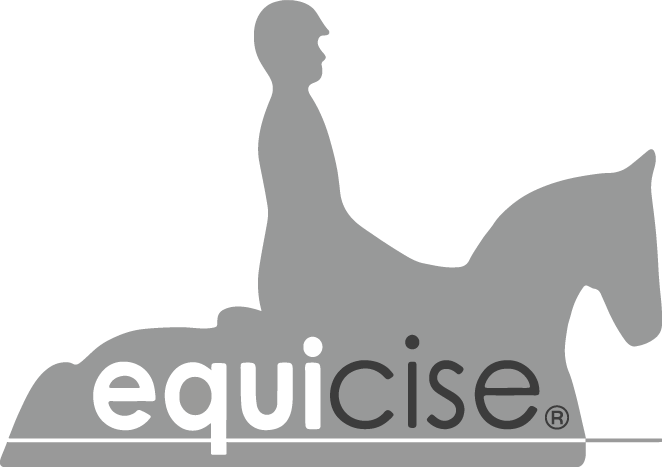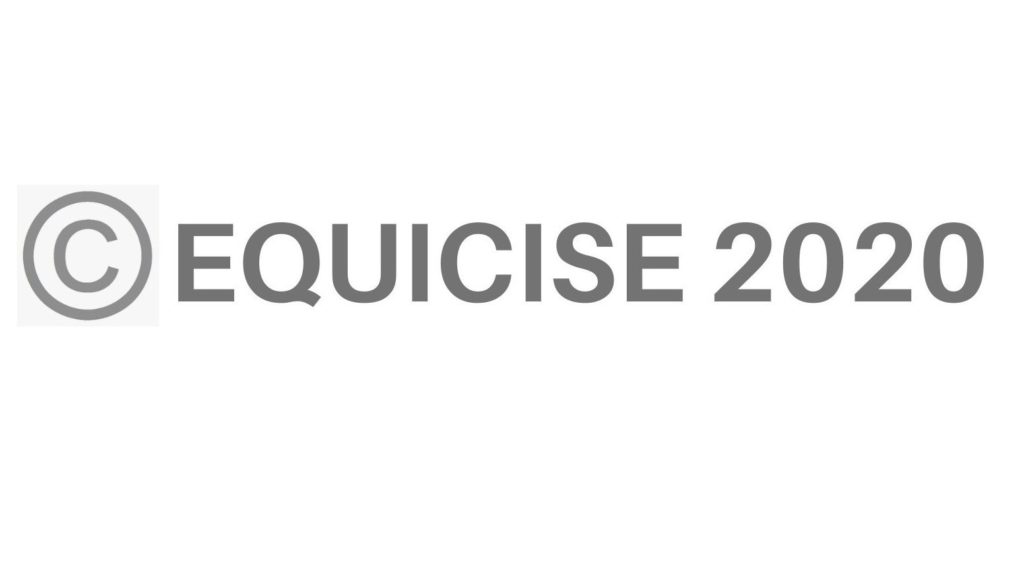15 Jun 6. Achieving light hands and giving the correct rein aids
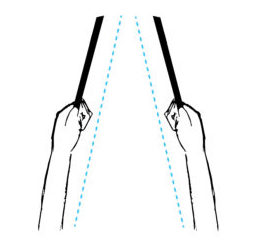
While we may use our intention, our core and our legs to achieve the desired movements from our horse, rein contact and ensuring we have soft or light hands and the ability to communicate clearly through the correct rein aids are also essential if we are to get the best results.
We have already discussed the correct position for a rider’s hands (see Article no 2 – Improving your upper body position) but, as a reminder, your wrists should be straight and your thumb the highest point of your hand, with a straight line from your elbows to the horse’s mouth.
Everybody aims for soft/light/good hands, but what does that actually mean and, equally importantly, what does it not mean? It does not mean having such a loose hold on the reins that they can slip through your fingers if your horse tries to grab them from you – you need to hold them tightly enough to ensure a consistent contact. But you should have soft elbows and they need to be relaxed at your side (not flapping, obviously). To ensure your hands are in the correct position, you might like to imagine you are holding a small child in front of you, so that your hands are either side of the withers, slightly in front of the saddle (the height of your hands will depend on whether your horse is moving in a collected, working or stretched frame).
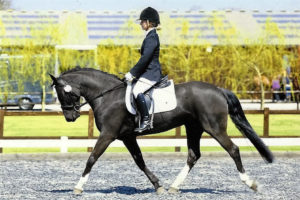 You should be aiming to keep your hands still in all paces, neither moving up and down nor from side to side, but maintaining that straight line from elbow to wrist to the horse’s mouth the whole time. However, unless you have already developed an independent seat (see Article no 4 – Becoming more balanced in the saddle), you will find it very hard, if not impossible, not to move your hands, especially in transitions. If your attention is elsewhere (perhaps focusing on sitting correctly or giving the right leg aids), you may not be aware that your hands are moving, but a quick glance down will help you assess if you are managing to keep your hands steady. Alternatively, you can ask your instructor to remind you if necessary or use mirrors as a check – practising on an equine simulator is also an excellent way to help monitor your progress.
You should be aiming to keep your hands still in all paces, neither moving up and down nor from side to side, but maintaining that straight line from elbow to wrist to the horse’s mouth the whole time. However, unless you have already developed an independent seat (see Article no 4 – Becoming more balanced in the saddle), you will find it very hard, if not impossible, not to move your hands, especially in transitions. If your attention is elsewhere (perhaps focusing on sitting correctly or giving the right leg aids), you may not be aware that your hands are moving, but a quick glance down will help you assess if you are managing to keep your hands steady. Alternatively, you can ask your instructor to remind you if necessary or use mirrors as a check – practising on an equine simulator is also an excellent way to help monitor your progress.
Just as the height of your hands will vary depending on whether you are in a collected or working pace, so will the amount of weight you feel in your hands, while the conformation of your horse also plays a role. If your horse is stretching down, you will feel more weight, less in a working pace and still less when your horse is fully collected and is carrying itself. It is worth remembering the movement flow of a horse: from your leg to its hind quarters to its back and finally to its head, so your hands and rein aids are the final piece of the puzzle.
Your hands are the most important connection that you have with your horse but practising on a real horse carries risks as excess hand movements can be distracting or confusing and, as the mouth is so delicate, possibly also cause pain. By contrast, the EQUICISE provides an excellent opportunity to learn and practise and it also allows you to measure your progress. The rein sensors are connected to the horse’s mouth and measure tension through each rein independently, thereby giving a very accurate reading which you can see on the screen in front of you. Most people ride more heavily on one hand even though they may not realise it — the EQUICISE will show this up immediately and it is only when you recognise your weaknesses that you can begin to correct them. As a starting point, you can ride a two minute ‘Test Ride’ which will produce a chart on the screen showing exactly how your rein contact varies in the different paces, a very useful tool for spotting any imbalances.
Your instructor will take you through exercises that will enable you to develop a softer and more even connection on the reins at all paces. Remember that softness needs to come all the way from your shoulders, through your elbows and hands to the horse’s mouth and this softness must be retained even when you are applying aids and riding transitions. You will also be able to practise without stirrups, testing your ability not to rely on your hands for balance or stiffen in your shoulders, thereby interrupting the smooth connection with the reins. You cannot hide from the EQUICISE — if you are moving your hands, it will tell you! It may take a few sessions to master this skill, but once you have done so, you will see incredible transformations in your riding performance.
Book a HAND POSITION AND REIN CONTACT LESSON on the EQUICISE now.
Practise this on the equicise simulator
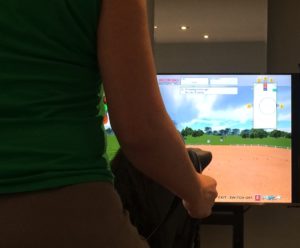 Use the ‘Dressage Test’ setting. Press reset. Ride the horse into the 20 x 40 dressage arena and work on a 20 metre circle at B. In walk, start to practise keeping a good, light, even rein contact with your hands a bit’s width apart, checking that the rein setting doesn't light up to red at any time. Keeping your outside rein contact still and quiet, practise opening your inside rein approximately 4 inches, maintaining the light contact and then return to bit’s width again. Next, allow your elbow to straighten so that your hand moves towards the bit and the contact is temporarily given forward. Repeat the exercise opening out and then giving forward in walk, trot and canter on the circle on both reins.
Use the ‘Dressage Test’ setting. Press reset. Ride the horse into the 20 x 40 dressage arena and work on a 20 metre circle at B. In walk, start to practise keeping a good, light, even rein contact with your hands a bit’s width apart, checking that the rein setting doesn't light up to red at any time. Keeping your outside rein contact still and quiet, practise opening your inside rein approximately 4 inches, maintaining the light contact and then return to bit’s width again. Next, allow your elbow to straighten so that your hand moves towards the bit and the contact is temporarily given forward. Repeat the exercise opening out and then giving forward in walk, trot and canter on the circle on both reins.

